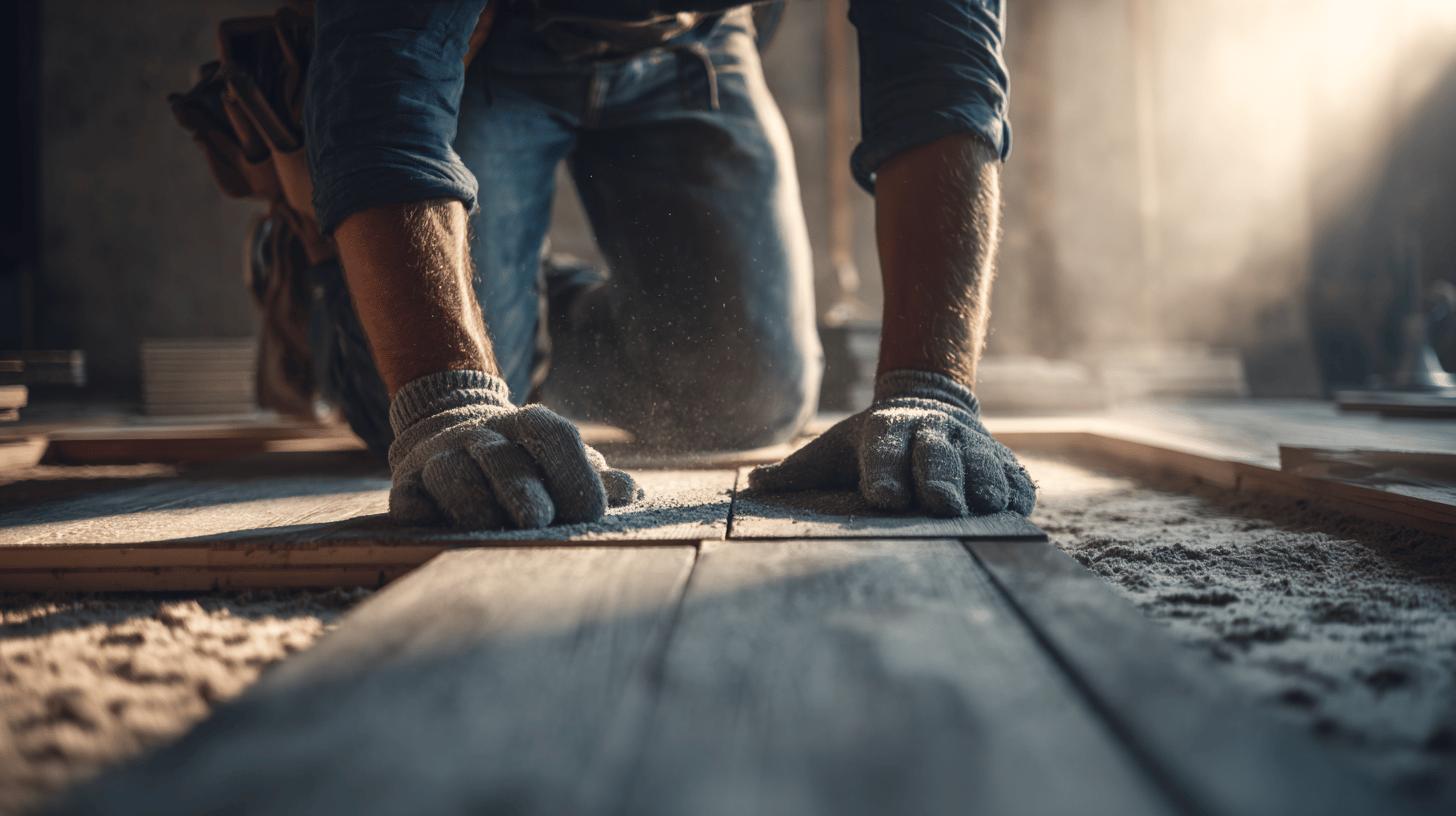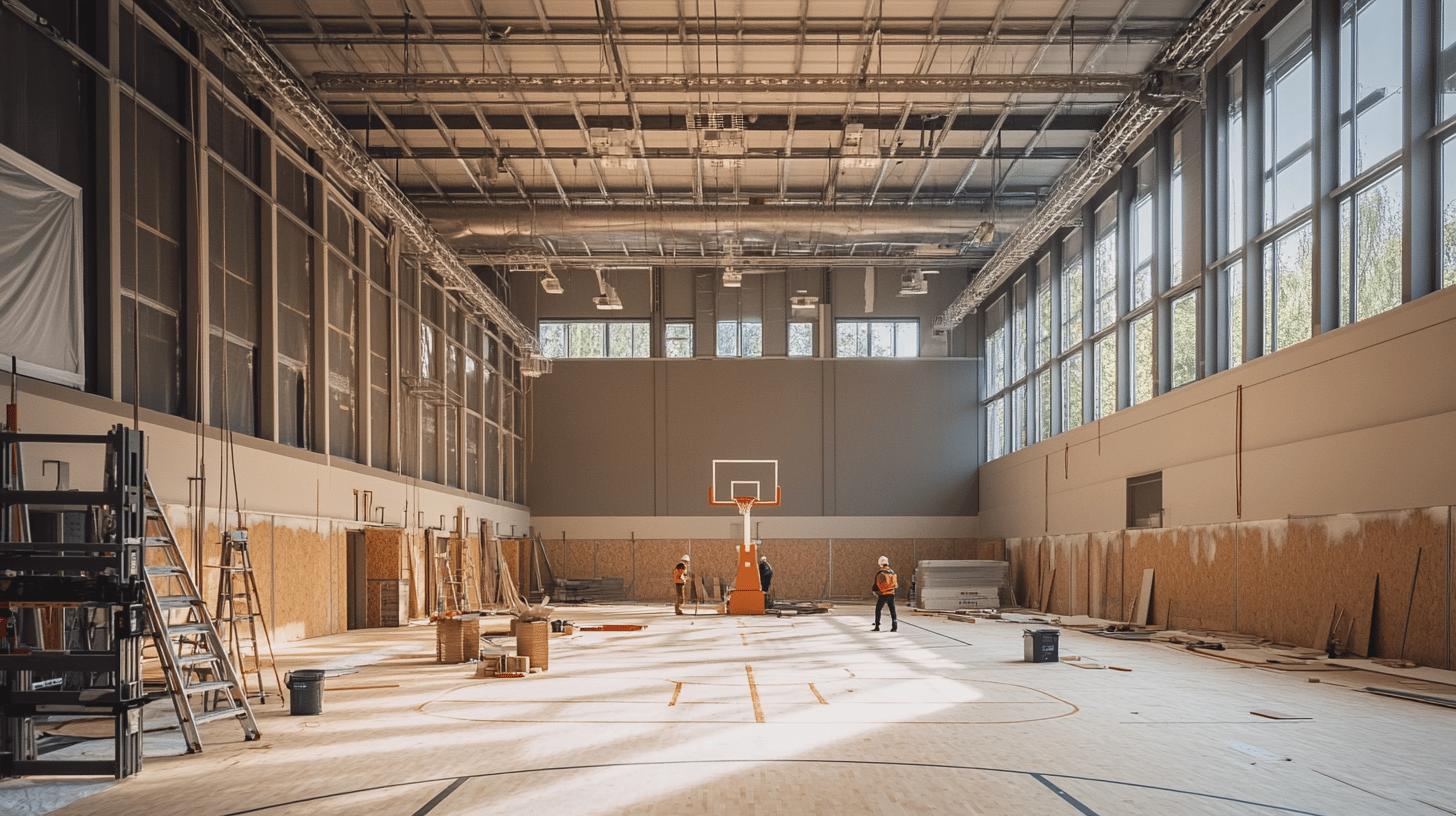Is your sports facility plagued by loose bolts undermining the safety of your timber floors? The phenomenon known as “bolt creep” could be your culprit, a silent adversary threatening the structural integrity of your flooring. But fear not; there’s a solution—basket-hoop anchor pads are specifically engineered to tackle this issue head-on. These innovative pads offer an effortless way to secure bolts, ensuring a long-lasting and stable floor. Dive into the article to understand how you can harness the power of basket-hoop anchor pads for flawless timber floor maintenance.
Understanding Bolt “Creep” in Timber Floors
Bolt “creep” refers to the gradual loosening of bolts over time, a phenomenon that can severely impact timber floors. This loosening occurs due to vibrational forces, temperature fluctuations, and improper installation methods. The progressive nature of bolt “creep” can compromise the structural integrity of the flooring, leading to potential safety hazards.
In timber floors, bolt “creep” is particularly concerning due to the material’s susceptibility to environmental changes. Temperature variations can cause timber to expand and contract, thereby affecting the tension in the bolts and leading to their gradual loosening. Furthermore, improper installation, such as inadequate tightening or misalignment of bolts, can accelerate the occurrence of bolt “creep.” Vibrational forces, often from foot traffic or equipment use, exacerbate this issue by continually stressing the bolt connections, eventually causing them to loosen.
Unchecked bolt “creep” poses significant risks, including compromised floor stability and increased safety hazards. Over time, as bolts become loose, the structural support they provide diminishes, potentially leading to uneven flooring or even structural failure. This increases the likelihood of accidents, making it essential to address bolt “creep” proactively through proper installation, regular inspections, and timely maintenance.
Mechanisms of Basket-Hoop Anchor Pads
Basket-hoop anchor pads are engineered to secure basketball systems firmly, utilising specific components to combat bolt “creep.” At the core of these anchor pads are steel plates and resin sleeves, crucial elements that ensure stability and durability. Steel plates provide a robust foundation, capable of withstanding substantial force and pressure, while resin sleeves offer an additional layer of protection against bolt movement. The combination of these materials ensures that the anchor pads can effectively distribute weight evenly across the timber floor, reducing stress on individual bolts. This distribution is vital for maintaining the structural integrity of the floor, especially in environments subject to frequent use and vibrations from sports activities.
- Enhanced Weight Distribution: Spreads the load evenly to prevent concentrated stress on bolts.
- Vibration Absorption: Minimises the impact of continuous movements and vibrations.
- Durability: High-quality materials ensure long-lasting performance.
- Corrosion Resistance: Steel and resin components are resistant to environmental wear.
- Ease of Installation: Designed for straightforward installation with minimal disruption.
.
These features specifically address bolt “creep” by maintaining consistent tension in the securing bolts, even as environmental and usage conditions change. By absorbing vibrations and distributing weight, the anchor pads minimise the risk of bolts loosening over time. Consequently, this reduces maintenance requirements and enhances the safety and reliability of timber floors in sports facilities.
Installation Techniques for Anchor Pads on Timber Floors

Correct installation of anchor pads is paramount to ensuring the longevity and effectiveness of timber floors in mitigating bolt “creep.” Without precise alignment and secure fastening, the stability of the floor can be compromised, leading to increased maintenance needs and potential safety hazards. High-quality materials and meticulous installation techniques play a critical role in preserving the structural integrity of timber floors, especially in high-traffic sports environments.
To install anchor pads on timber floors effectively, begin by preparing the site. Clear the area of any debris and ensure the timber surface is clean and dry. Next, align the anchor pads precisely over the designated installation points. This alignment is crucial as it determines the distribution of weight and stress across the floor. Once aligned, secure the anchor pads using appropriate fastening tools and high-quality screws, ensuring each bolt is tightened to the manufacturer’s specifications. This step is vital for preventing any future bolt loosening due to vibrations or environmental changes. Finally, conduct a thorough inspection to confirm the stability and security of the anchor pads.
Common pitfalls during installation include misalignment of anchor pads and the use of substandard materials. Both can lead to ineffective weight distribution and increase the likelihood of bolt “creep.” To avoid these issues, always use recommended materials and double-check alignment before fastening. Additionally, ensure that all fastening tools are in proper working order to achieve the required tension in the bolts.
Maintenance Tips for Long-Term Floor Stability
Regular inspections are essential in maintaining the stability of timber floors and preventing bolt “creep.” By routinely examining the flooring, one can identify early signs of wear or bolt movement, such as loosening bolts, visible gaps, or uneven surfaces. These indicators suggest that immediate action is required to address potential issues before they escalate. Inspections should be conducted in conjunction with a thorough understanding of the environmental conditions that affect timber floors, such as humidity and temperature fluctuations, as these factors can exacerbate bolt “creep.” Timely repairs following inspections are crucial for mitigating risks and preserving the structural integrity of the floor.
- Adjust environmental controls to maintain stable humidity and temperature levels.
- Perform routine visual checks for signs of bolt movement or wear.
- Tighten any loose bolts immediately to prevent further loosening.
- Use high-quality materials for repairs to ensure durability.
- Schedule professional assessments periodically for expert evaluation.
.
Preventive care significantly enhances the longevity of timber floors by addressing issues before they develop into major problems. Regular maintenance not only prevents bolt “creep” but also contributes to the overall preservation of the flooring. By proactively managing environmental conditions and conducting timely inspections and repairs, one can minimise the need for extensive refurbishments. This approach not only extends the lifespan of the timber floors but also ensures a safer and more reliable surface for sports and other activities, ultimately proving cost-effective in the long run.
Product Recommendations for Effective Anchor Pads
When selecting anchor pads for timber floors, key criteria include material quality, design innovation, and anti-creep technology. High-quality materials ensure durability and resistance to environmental stresses, while innovative designs enhance the effectiveness of weight distribution and vibration absorption, crucial for preventing bolt “creep.”
One recommended product is the “ProSecure Anchor Pad,” which features an advanced anti-creep design. This pad uses reinforced steel and a unique resin sleeve system that provides superior vibration absorption, ensuring bolts remain secure. Another option is the “StabilityGuard Pad,” known for its high-density polymer base, which offers excellent weight distribution and reduces stress on timber floors. Its innovative design includes integrated fasteners that simplify installation and enhance stability. Both products demonstrate a commitment to high-quality, long-lasting performance in high-traffic environments.
These anchor pads can be purchased from specialised sports flooring suppliers and online marketplaces. When buying, look for products that offer guarantees or warranties, which provide additional assurance of quality and performance. This ensures that the investment in anchor pads not only meets current needs but also provides long-term benefits in maintaining the integrity and safety of timber floors.
Final Words
Navigating the complexities of bolt “creep” in timber floors is essential for ensuring structural integrity and safety.
Utilising basket-hoop anchor pads, specifically engineered to mitigate this issue, offers robust solutions by distributing weight and absorbing vibrations effectively.
Accurate installation techniques further enhance these benefits, requiring precise alignment and quality materials.
Regular maintenance and vigilant monitoring play crucial roles in preserving floor stability over time.
Choosing products designed with anti-creep technology provides assurance, offering the best possible outcomes.
Embracing these strategies for Basket-Hoop Anchor Pads: Preventing Bolt “Creep” in Timber Floors not only enhances safety but also prolongs the life of indoor sports facilities.
Secure hoop anchors → Sports Flooring Contractors
FAQ
What is an NBS specification example?
NBS specifications provide structured guidelines for construction projects. An example document demonstrates how materials, workmanship, and compliance requirements are detailed, ensuring designs meet industry standards.
What does the NBS specification codes list include?
The NBS specification codes list includes alphanumeric identifiers for consistent categorisation of construction elements. This enhances communication and accuracy across various project documents.
What is the difference between Uniclass and CAWS?
Uniclass and CAWS (Common Arrangement of Work Sections) are classification systems used in construction. Uniclass is more comprehensive, covering all aspects of the built environment, whereas CAWS is narrower, focusing mainly on work sections within building projects.
How are NBS specification clauses structured?
NBS specification clauses are structured with headings and detailed descriptions. Each clause addresses specific elements such as materials, performance criteria, and compliance measures, ensuring clarity and precision in project documentation.
What is included in an NBS architectural specification?
NBS architectural specifications encompass design and construction requirements for a project. They detail materials, workmanship, and regulatory standards, binding stakeholders to agreed conditions and expectations.
What is the relevance of NBS N10 and NBS L10 codes?
NBS N10 and L10 codes refer to specific work sections within NBS specifications. N10 covers general fittings, furnishings, and equipment, while L10 pertains to windows, rooflights, and associated items.
Why is the National Building Specification important?
The National Building Specification provides industry-standard specifications, enhancing consistency and quality in construction. It supports the clear articulation of architectural and engineering requirements.
How does bolt “creep” affect timber floors?
Bolt “creep” refers to bolt loosening over time in timber floors, caused by vibrations, temperature fluctuations, and inadequate installation. It risks structural integrity and safety, necessitating vigilant monitoring and maintenance.
How do basket-hoop anchor pads prevent bolt “creep”?
Basket-hoop anchor pads utilise steel plates and resin sleeves to stabilise bolts, distributing weight and absorbing vibrations. This design mitigates the risk of bolt loosening, enhancing floor safety and longevity.


